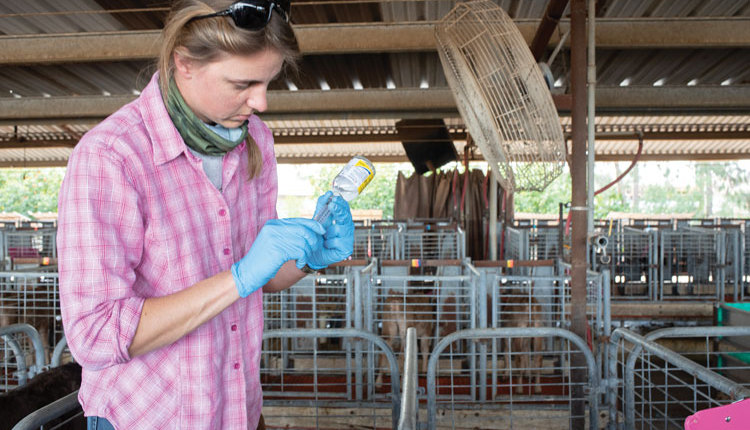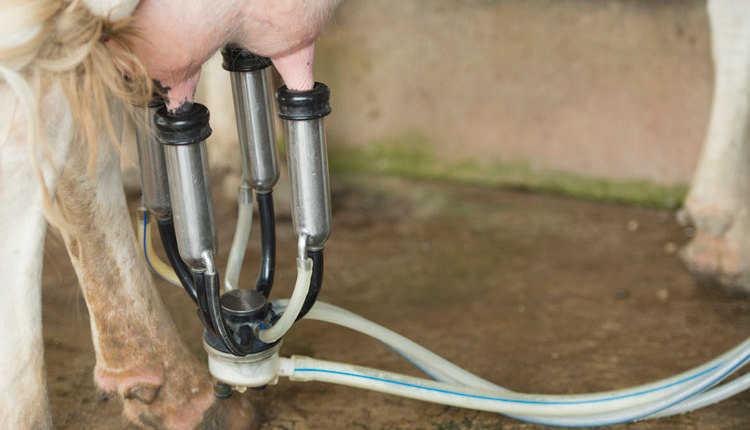
The author is a senior partner in the Evansville Veterinary Service, Evansville, Wis.
Consistency is an important factor in caring for cows, and in no place is it more important than during milking. Ann could recite the milking technique that was used on her dairy quickly, and the words haven't changed in years. However, some milkers had changed through the years.
Several of the measures relative to the udder health in her herd had changed, too. She couldn't understand why because she felt nothing in the milking routine or housing had changed. Of the measures she watched, some of the changes appeared to be positive and some negative. She had set a goal to reduce the number of clinical cases, and that goal had been met, but the bulk tank cell count had gone up, and that concerned her.
Let's start with a few definitions relative to udder health because these two trends seem in conflict. We need to develop a true picture of the pattern of both subclinical and clinical mastitis. While both represent udder infections, there are both differences and similarities between them that need to be identified in order to make them a single package to understand udder health. The definitions that everyone involved needs to share if we're going to communicate about this are:
Clinical mastitis is a cow with abnormal milk.
100210_94
Consistency is an important factor in caring for cows, and in no place is it more important than during milking. Ann could recite the milking technique that was used on her dairy quickly, and the words haven't changed in years. However, some milkers had changed through the years.
Several of the measures relative to the udder health in her herd had changed, too. She couldn't understand why because she felt nothing in the milking routine or housing had changed. Of the measures she watched, some of the changes appeared to be positive and some negative. She had set a goal to reduce the number of clinical cases, and that goal had been met, but the bulk tank cell count had gone up, and that concerned her.
Let's start with a few definitions relative to udder health because these two trends seem in conflict. We need to develop a true picture of the pattern of both subclinical and clinical mastitis. While both represent udder infections, there are both differences and similarities between them that need to be identified in order to make them a single package to understand udder health. The definitions that everyone involved needs to share if we're going to communicate about this are:
Clinical mastitis is a cow with abnormal milk.
- A mild case is abnormal milk only.
- A moderate case is abnormal milk with tissue inflammation.
- A severe case is abnormal milk with tissue inflammation and at least one whole-body symptom such as fever or off-feed.
- A new case is more than 200,000 this month when the cow was under 200,000 last month even if the dry period is between the two months.
- A chronic case is a cow with greater than 200,000 SCC for the last two months even if the dry period is between the two months.
- A cure is a cow with less than 200,000 this month when she was over 200,000 last month even if the dry period is between the two months.
Ann had the tools we needed to identify the patterns for each subclinical mastitis and clinical mastitis. She had monthly somatic cell count, prestripping was part of her milking preparation, and she recorded mastitis cases.
Checked infection pattern
We looked for a pattern of infections in the subclinical population and the clinical infections separately. Even though they are both part of the big picture of cows getting infected, keeping them separate improves our understanding of what cows are getting infected and when they are getting infected. If we do this right, we can identify areas of opportunity to prevent exposures to bacteria that will result in reduced infections.
We seek to identify patterns of cases in the herd:
Prestripping important
Another of the three tools stated initially as important was having prestripping as part of the process for preparing a cow for milking. The prestripping is the only way that we can detect mild cases of mastitis (abnormal milk only). The third tool we wanted to use was Ann's recording of mastitis. We would expect more mild cases than the two other severities. Ann was recording the fact that a cow had mastitis and the drug she used but not the severity.
There are several layers to what is valuable information. Ann was complying with the requirement to maintain drug usage records, and that's valuable. But we were stuck when attempting to evaluate the pattern of severities of clinical cases. Was the decline in cases an actual drop or a drop in the detection of mild cases at milking time?
It appears on the surface that asking for a drop in clinical cases may have been achieved easily for Ann by backing off on the detection of mild cases, not reducing the actual number of them. What she asked for wasn't what she wanted. She wanted a decrease in exposure with a corresponding decrease in infections. Subclinical information demonstrated for sure that the infection rate was going up. Our next step needs to be evaluating the cow preparation with emphasis on the mastitis detection during milking and where exposures to bacteria may be occurring.
Checked infection pattern
We looked for a pattern of infections in the subclinical population and the clinical infections separately. Even though they are both part of the big picture of cows getting infected, keeping them separate improves our understanding of what cows are getting infected and when they are getting infected. If we do this right, we can identify areas of opportunity to prevent exposures to bacteria that will result in reduced infections.
We seek to identify patterns of cases in the herd:
- Number of infected cows by age . . . first, second, and later lactation.
- Number infected at different stages of lactation: less than 41 DIM, 42-150 DIM, 151-240 DIM, and more than 240 DIM.
- Number of cases by severity of case experienced by the cow . . . SCC count for subclinical, mild, moderate, and severe for clinical mastitis.
- Proportions of bacteria that are causing the cases.
- Number of cows that have relapsed recorded by relapse interval.
- Proportion of clinical cases that were subclinically infected first.
Prestripping important
Another of the three tools stated initially as important was having prestripping as part of the process for preparing a cow for milking. The prestripping is the only way that we can detect mild cases of mastitis (abnormal milk only). The third tool we wanted to use was Ann's recording of mastitis. We would expect more mild cases than the two other severities. Ann was recording the fact that a cow had mastitis and the drug she used but not the severity.
There are several layers to what is valuable information. Ann was complying with the requirement to maintain drug usage records, and that's valuable. But we were stuck when attempting to evaluate the pattern of severities of clinical cases. Was the decline in cases an actual drop or a drop in the detection of mild cases at milking time?
It appears on the surface that asking for a drop in clinical cases may have been achieved easily for Ann by backing off on the detection of mild cases, not reducing the actual number of them. What she asked for wasn't what she wanted. She wanted a decrease in exposure with a corresponding decrease in infections. Subclinical information demonstrated for sure that the infection rate was going up. Our next step needs to be evaluating the cow preparation with emphasis on the mastitis detection during milking and where exposures to bacteria may be occurring.








